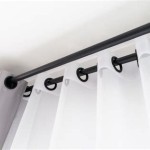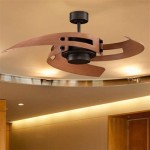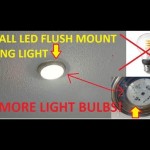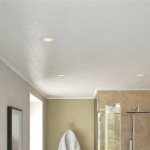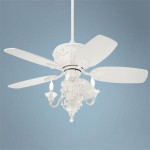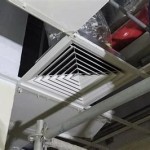How To Install Can Lights In A Drop Ceiling
Installing can lights, also known as recessed lights, in a drop ceiling is a common way to improve illumination and create a modern aesthetic in spaces like basements, offices, and commercial buildings. While it may seem like a daunting task, with careful planning, the right tools, and a methodical approach, homeowners and contractors alike can achieve professional-looking results. This article provides a comprehensive guide to installing can lights in a drop ceiling, covering everything from preparation and safety precautions to the actual installation process.
Before commencing the installation, it is crucial to understand the scope of the project and ensure compatibility of the chosen can lights with the existing drop ceiling structure. Drop ceilings, also referred to as suspended ceilings, typically consist of a grid of metal runners suspended from the overhead structure, with lightweight ceiling tiles placed within the grid. The weight and design of can lights must be suitable for the drop ceiling grid to prevent sagging or damage.
The first step involves planning the layout. Consider the size of the room, the desired light output, and the existing structural elements above the drop ceiling. A well-planned layout ensures even light distribution and minimizes the need to relocate or modify the existing wiring.
Key Point 1: Planning and Preparation
Proper planning and preparation are paramount to a successful can light installation. This involves assessing the existing electrical system, selecting appropriate can lights, and gathering all necessary tools and materials. Ignoring these preliminary steps can lead to complications and delays during the installation process.
Electrical Assessment: Before starting, an electrical assessment is mandatory. This involves determining the existing wiring capacity and ensuring that the circuit to which the can lights will be connected can handle the additional load. Overloading a circuit can result in tripped breakers, flickering lights, and, in severe cases, electrical fires. Consult a qualified electrician if unsure about the electrical capacity or wiring condition. If the circuit's capacity is insufficient, a new circuit may need to be installed. Check local electrical codes and regulations, as adherence to these codes is essential for safety and compliance.
Can Light Selection: Choosing the right can lights is crucial. Consider the type of bulb (LED, incandescent, halogen), the light output (lumens), the color temperature (Kelvin), and the trim style. LED lights are generally preferred for their energy efficiency and long lifespan. The size of the can light housing must also be compatible with the available space above the drop ceiling. Low-profile can lights are often a good choice for areas with limited headroom. Consider the insulation contact (IC) rating of the can lights. IC-rated fixtures can be safely installed in direct contact with insulation, while non-IC-rated fixtures require a clearance of at least 3 inches from any insulation.
Tools and Materials: Assemble all the necessary tools and materials before starting the installation. This typically includes:
- Can lights (with appropriate trim)
- Wire connectors (wire nuts or push-in connectors)
- Electrical wire (of appropriate gauge)
- Wire stripper/cutter
- Pliers
- Screwdriver (Phillips and flathead)
- Drill (with hole saw attachment matching the can light diameter)
- Tape measure
- Level
- Pencil or marker
- Safety glasses
- Gloves
- Ladder or scaffolding
- Voltage tester
- Fish tape (for pulling wires)
- Drop ceiling tile cutter (optional)
Safety Precautions: Safety should always be the top priority. Before starting any electrical work, turn off the power to the circuit at the main breaker panel. Verify that the power is off using a voltage tester. Wear safety glasses and gloves to protect your eyes and hands. Avoid working in damp or wet conditions. If unsure about any aspect of the installation, consult a qualified electrician.
Key Point 2: Installation Process
The installation process involves cutting holes in the drop ceiling tiles, wiring the can lights, and securing them to the ceiling grid. A systematic approach ensures a clean and professional installation.
Marking and Cutting Holes: Using the planned layout as a guide, mark the locations for the can lights on the drop ceiling tiles. Use a tape measure and level to ensure accurate placement. A template or the can light housing itself can be used to trace the outline of the hole. Use a hole saw attachment on a drill to cut the holes. Alternatively, a drop ceiling tile cutter can be used for cleaner cuts. Be careful not to damage the ceiling tiles. Consider using a backer board behind the tile to prevent tearing or splintering.
Wiring the Can Lights: With the power off, run electrical wire from the existing junction box (or power source) to the location of each can light. Use fish tape to pull the wire through the ceiling space if necessary. Connect the wiring to the can light according to the manufacturer's instructions. Typically, this involves connecting the black (hot) wire to the black wire, the white (neutral) wire to the white wire, and the green (ground) wire to the ground wire. Use wire connectors (wire nuts or push-in connectors) to make secure connections. Ensure that all connections are properly insulated and that no bare wire is exposed.
Securing the Can Lights: Most can lights designed for drop ceilings come with clips or brackets that attach to the ceiling grid. These clips or brackets help to support the weight of the can light and prevent it from sagging. Secure the can lights to the grid according to the manufacturer's instructions. Ensure that the can lights are level and properly aligned.
Installing the Trim: After the can light housing is securely installed, install the trim according to the manufacturer's instructions. The trim is the visible portion of the can light that fits flush with the ceiling tile. Choose a trim style that complements the room's decor.
Key Point 3: Testing and Troubleshooting
After the installation is complete, it is essential to test the can lights and troubleshoot any issues that may arise. This ensures that the lights are functioning properly and that the installation is safe.
Testing the Lights: After completing the wiring and securing the can lights, turn the power back on at the main breaker panel. Test each can light to ensure that it is functioning properly. If a light does not turn on, check the wiring connections, the bulb, and the breaker. Ensure that the bulb is properly seated in the socket. If the breaker trips, there may be a short circuit in the wiring.
Troubleshooting Common Issues: Several common issues can arise during or after the installation of can lights. These include:
- Flickering Lights: Flickering lights can be caused by loose wiring connections, a faulty bulb, or a problem with the circuit. Check all wiring connections and replace the bulb. If the problem persists, consult a qualified electrician.
- Tripped Breaker: A tripped breaker is usually caused by an overloaded circuit or a short circuit. Reduce the number of lights on the circuit or check the wiring for any shorts. If the problem persists, consult a qualified electrician.
- Sagging Ceiling Tiles: Sagging ceiling tiles can be caused by the weight of the can lights. Ensure that the can lights are properly supported by the ceiling grid. Consider using additional support brackets or replacing the ceiling tiles with heavier duty tiles.
- Uneven Light Distribution: Uneven light distribution can be caused by improper placement of the can lights. Adjust the position of the can lights to achieve a more even distribution of light.
Final Inspection: After testing the lights and troubleshooting any issues, perform a final inspection of the installation. Ensure that all wiring connections are secure, that the can lights are properly secured to the ceiling grid, and that the trim is properly installed. Ensure that all safety precautions have been followed and that the installation complies with local electrical codes.
While this guide provides a comprehensive overview of how to install can lights in a drop ceiling, it is essential to remember that electrical work can be dangerous. If at any point you feel uncomfortable or unsure about any aspect of the installation, consult a qualified electrician. They can provide expert guidance and ensure that the installation is safe and compliant with local codes.
Additionally, always consult the manufacturer's instructions for the specific can lights you are installing. These instructions often contain valuable information and specific guidance that is relevant to the particular model of can light. Following the manufacturer's instructions is essential for ensuring a proper and safe installation.
Proper preparation, careful execution, and attention to detail are key to achieving a successful can light installation in a drop ceiling. By following the steps outlined in this guide and consulting with qualified professionals when needed, you can transform your space with improved lighting and a modern aesthetic.
Remember to always prioritize safety, adhere to local electrical codes, and seek professional assistance when needed. A well-installed can lighting system can enhance the ambiance and functionality of any room for years to come.

How To Install Recessed Lights In A Drop Ceiling Temecula Handyman

Light Installation In A Ceiling Tile

Diy Recessed Lighting Installation In A Drop Ceiling Tiles Part 3 Super Nova Adventures

Recessed Lighting In Basement Drop Ceiling Made Easy Suspended Ceilings And Recesse Dropped

Operation Laundry Room Lighting Reality Daydream

Diy Recessed Lighting Installation In A Drop Ceiling Tiles Part 3 Super Nova Adventures

How To Install Recessed Lights In A Drop Ceiling The Home Depot

Drop Ceiling Installation How To Install A Homeserve Usa

Drop Ceiling Tiles Installation Tips Diy Family Handyman

Install Recessed Lights Installing Lighting Drop Ceiling Diy
Related Posts

